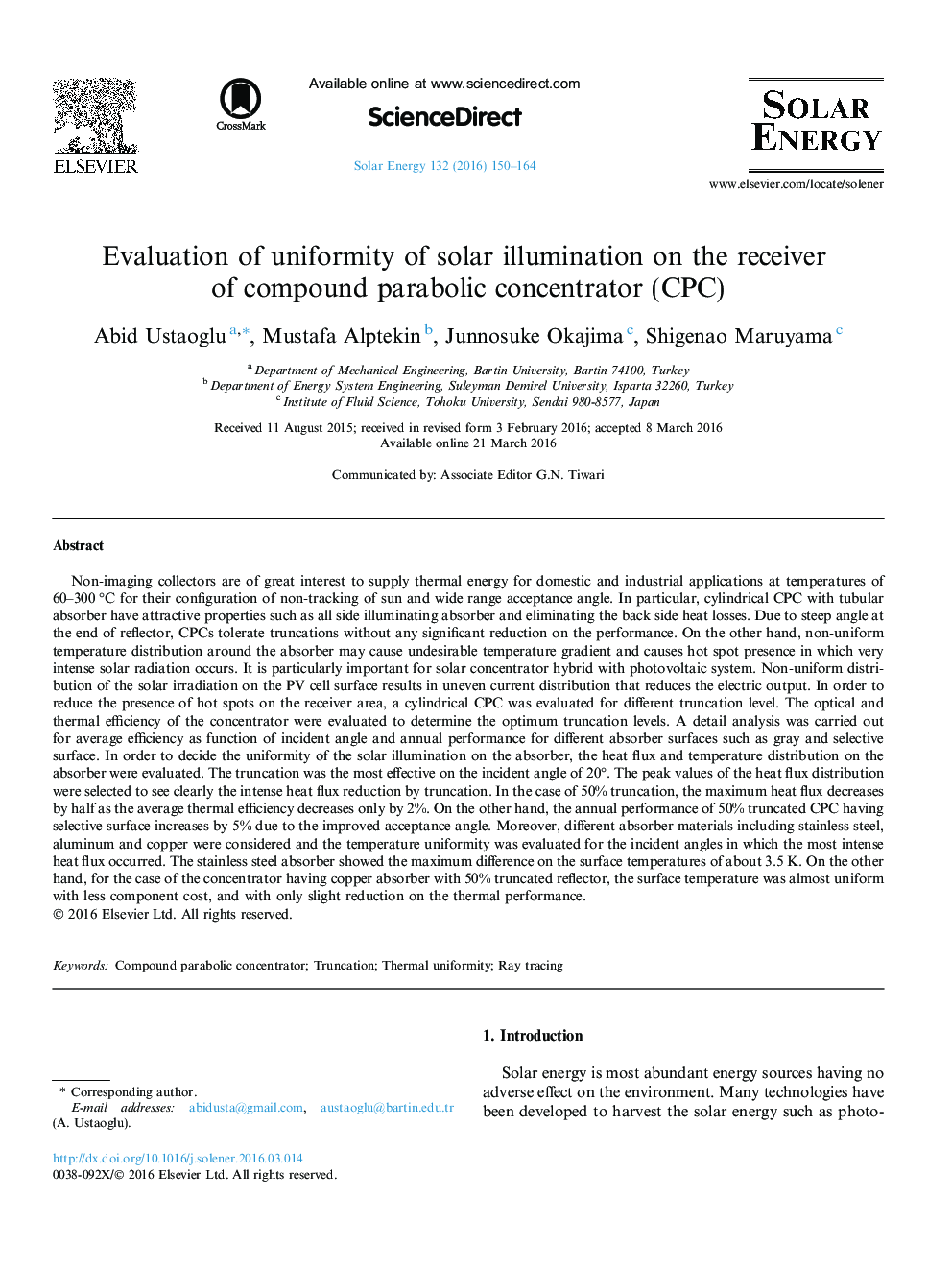| کد مقاله | کد نشریه | سال انتشار | مقاله انگلیسی | نسخه تمام متن |
|---|---|---|---|---|
| 1549392 | 1513086 | 2016 | 15 صفحه PDF | دانلود رایگان |

• A cylindrical CPC was evaluated for different absorber materials and truncation level of reflector.
• Optimum size was decided in terms of optical and thermal performance.
• Heat flux and temperature distribution on absorber were evaluated for more uniform illumination.
• A uniform illumination on absorber is obtained for 50% truncated concentrator.
• Even though 50% truncation, CPC performs without any significant loss on thermal performance.
Non-imaging collectors are of great interest to supply thermal energy for domestic and industrial applications at temperatures of 60–300 °C for their configuration of non-tracking of sun and wide range acceptance angle. In particular, cylindrical CPC with tubular absorber have attractive properties such as all side illuminating absorber and eliminating the back side heat losses. Due to steep angle at the end of reflector, CPCs tolerate truncations without any significant reduction on the performance. On the other hand, non-uniform temperature distribution around the absorber may cause undesirable temperature gradient and causes hot spot presence in which very intense solar radiation occurs. It is particularly important for solar concentrator hybrid with photovoltaic system. Non-uniform distribution of the solar irradiation on the PV cell surface results in uneven current distribution that reduces the electric output. In order to reduce the presence of hot spots on the receiver area, a cylindrical CPC was evaluated for different truncation level. The optical and thermal efficiency of the concentrator were evaluated to determine the optimum truncation levels. A detail analysis was carried out for average efficiency as function of incident angle and annual performance for different absorber surfaces such as gray and selective surface. In order to decide the uniformity of the solar illumination on the absorber, the heat flux and temperature distribution on the absorber were evaluated. The truncation was the most effective on the incident angle of 20°. The peak values of the heat flux distribution were selected to see clearly the intense heat flux reduction by truncation. In the case of 50% truncation, the maximum heat flux decreases by half as the average thermal efficiency decreases only by 2%. On the other hand, the annual performance of 50% truncated CPC having selective surface increases by 5% due to the improved acceptance angle. Moreover, different absorber materials including stainless steel, aluminum and copper were considered and the temperature uniformity was evaluated for the incident angles in which the most intense heat flux occurred. The stainless steel absorber showed the maximum difference on the surface temperatures of about 3.5 K. On the other hand, for the case of the concentrator having copper absorber with 50% truncated reflector, the surface temperature was almost uniform with less component cost, and with only slight reduction on the thermal performance.
Journal: Solar Energy - Volume 132, July 2016, Pages 150–164